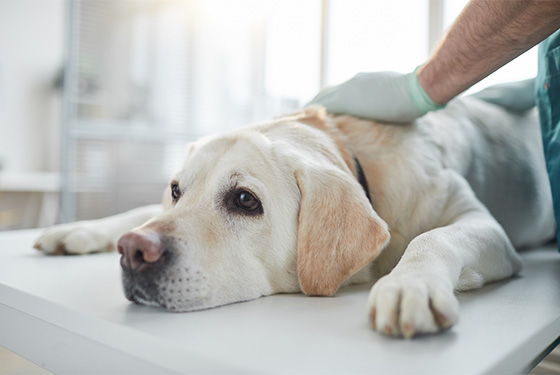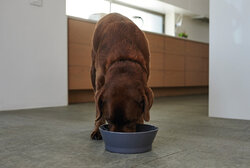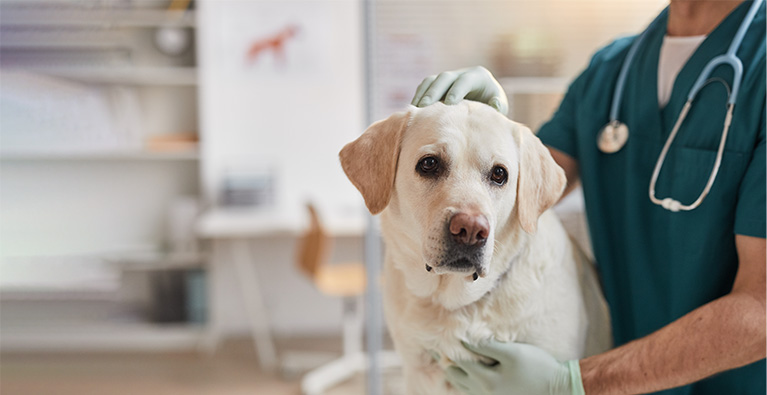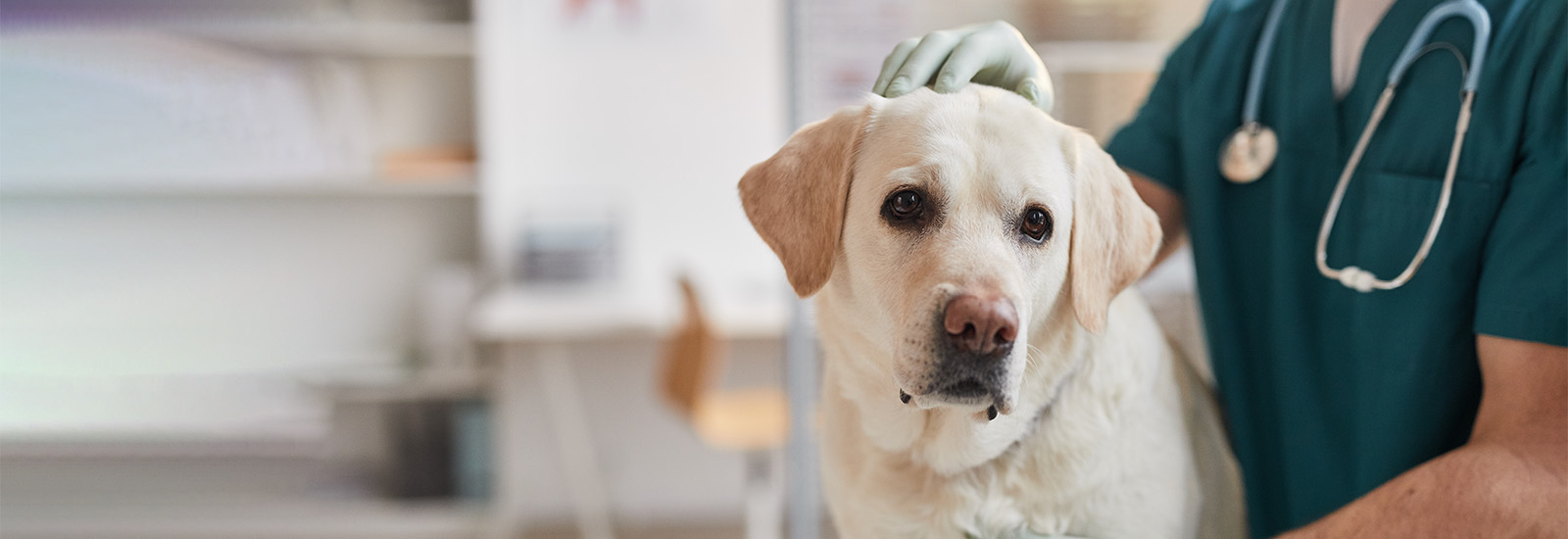When a dog is afraid of the vet
Many dogs are afraid of the vet. There are many different reasons for this. We have 10 useful tips on how you can help your dog to overcome its fear of going to the vet.
Avoid stress during your puppy’s first vaccinations
Most puppies receive three vaccinations within the first four months of their lives. In Germany, these are usually given in the 8th, 12th and 16th week as recommended by the veterinary vaccination commission. These three visits to the vet can be decisive for all subsequent visits. They should be as stress-free as possible from the moment you set off from home until your dog receives the vaccination. The experiences your dog has during this process can have a lifelong impact.
Set a good example
If you yourself are stressed, you will pass this on to your dog. It is therefore essential that you are as relaxed as possible before and during a visit to the vet. Leave the house well in advance so that you have plenty of time to spare. During the journey or walk to the doctor, behave as if you were simply planning a normal walk. Do not stroke your dog excessively or show it any sort of sympathy before it is even in the treatment room. For most dogs, it is important that you are present during the examination. If, however, you are excessively nervous, it may be better if you stay in the waiting room.
Keep your dog occupied before you visit the vet
If a dog has just woken up, is put in the car and is taken straight to the vet, this can have a negative effect. It is much better if your pet is able to stretch its legs and let off a little steam beforehand. A long walk or a game is also advisable so that your dog has had plenty of exercise and will be slightly tired and therefore more relaxed for the visit to the vet.
Choose a vet you can trust
It is important that you have complete trust in the vet. If not, your dog will sense this. Be honest with yourself and, if you have any doubts, it is better to switch to a different veterinary practice. You should have a good feeling about both the vet’s expertise and their manner. Do you feel that you are in good hands at the practice and does the vet interact well with your dog? Does the vet take enough time and answer your questions satisfactorily? If so, then this is a good starting point.
Choose the first appointment carefully
Stress can occur even before the dog is in the treatment room. If the waiting room is full of other pets, this is not a favourable situation for an anxious dog’s visit to the vet. It is a good idea to book the first appointment of the day when the waiting room is still empty and not yet full of strange smells and noises.
Simulate a visit to the vet
If you already know that your dog is afraid of the vet or you suspect that this may be the case due to its behaviour in general, then ask the veterinary practice whether you can drop by for a short visit. Just sit in the waiting room and give your dog the feeling that everything is OK. After a short while, get up again, praise your pet and go outside.
If they have a few minutes spare, go into the treatment room with your dog and simply have a short chat with the vet. Explain the situation and observe how your dog reacts to them. Maybe your pet will be glad to be given a few treats. Praise your dog and leave the practice. It can also be an advantage if you take your dog for a walk there every now and then so that it can get to know and memorise the surroundings.

Practise with your dog at home
Some dogs panic as soon as they enter the vet’s surgery, while others only have a problem when they are being examined. If this is the case, you can replicate the procedure at home. If your dog is not too big, put a blanket on a table and place your four-legged friend on it. Look into its ears, pull up its lips and feel all around its body. Although this is not the same as when the vet does it, it can be a good way to get your dog used to being touched.
Attend a dog school
It is probable that your dog is not just anxious about the vet. It may therefore be worth visiting a good dog school and discussing how to resolve any anxiety issues. Perhaps your dog has problems being touched by other people in general. This can be practised under controlled conditions to ensure that improvements are achieved step by step. You may also receive some valuable tips yourself, because it is often not only the dog but also the owner who needs guidance.
Chewing can calm your dog down
Chewing has a calming effect on dogs. At home this works very well with a chew bone – but this is not suitable for a visit to the vet. Make sure that you have plenty of your dog’s favourite treats with you so that you can give it a little snack every now and then. Liver sausage in a tube also goes down very well with most dogs. However, avoid being overly attentive to your pet, because this could make it suspicious.
The last resort: a home visit
There are a lot of things that you can do to help your dog overcome its fear of going to the vet. However, some dogs simply cannot be calmed down. They have to be carried – or more or less dragged – into the waiting room. You must decide for yourself whether you are happy with this. Sometimes it is unavoidable, but if you dog only requires a vaccination, then this can also be carried out at home. Ask your vet if they also make house calls, but beforehand, think about how your dog will react. If it has a problem with visitors in its home, a visit by the vet could result in the same or even greater problems. Also think about the vet’s own safety in this regard. If there is a risk of your dog snapping, then it should wear a muzzle. However, this is also not something that will work well from one day to the next. Here too, you should get your dog used to wearing the muzzle at as early a stage as possible.
You may also like this

Vaccinations for dogs
Early basic immunisation protects against diseases

Keeping your dog occupied
Occupation is important for a dog

Feeding your dog properly
There are a few things to consider regarding everyday feeding

Puppy school
Attending puppy school is very important

